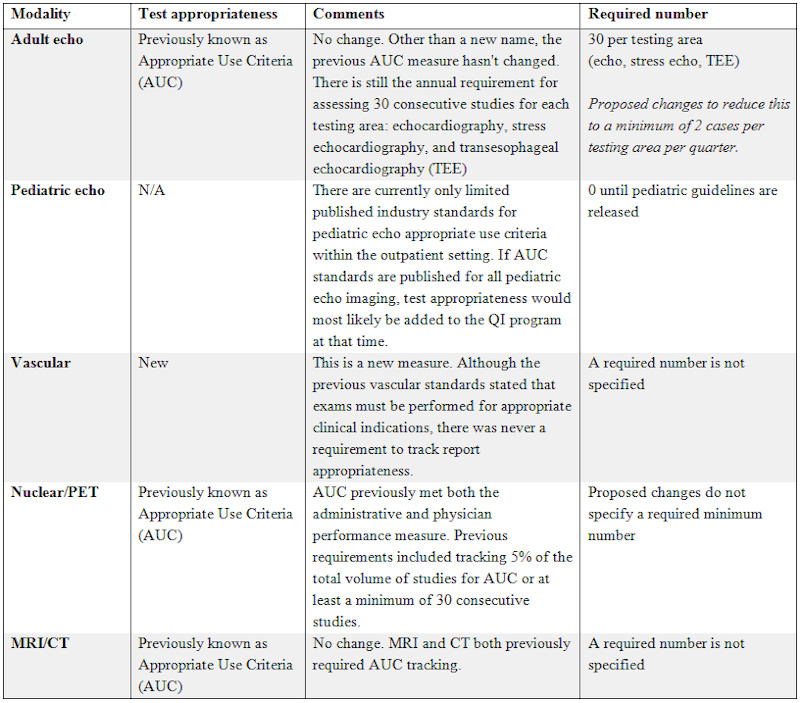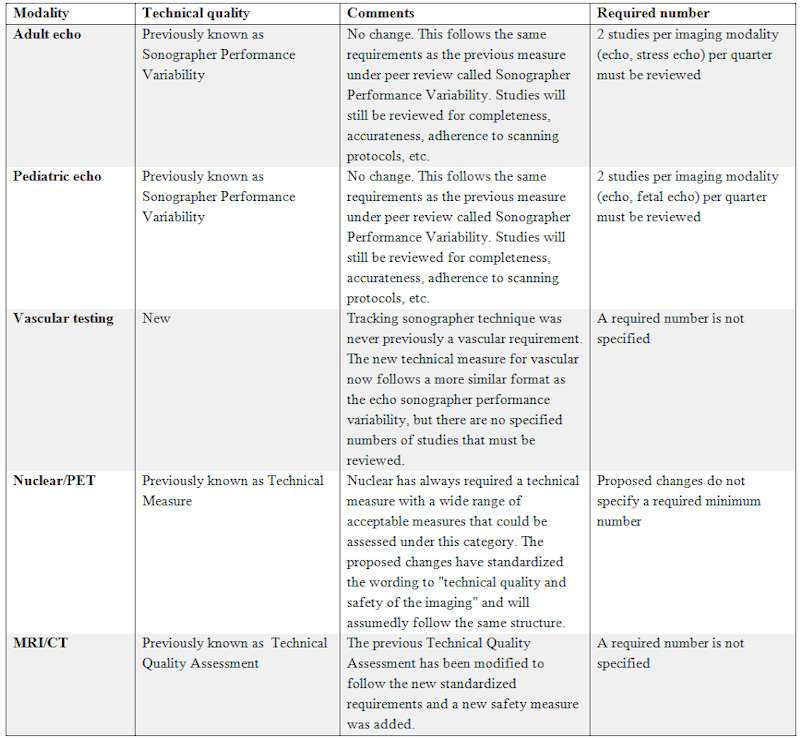While vital for high-quality care, accreditation can be challenging and sometimes tedious for imaging departments. To help, this new article series will offer some tips for how to comply with the latest Intersocietal Accreditation Commission (IAC) Quality Improvement (QI) requirements with quality and ease, more specifically with test appropriateness and technical quality.
Effective earlier this year, the IAC standardized its QI programs across all imaging modalities with the goal of addressing variations between the different modality divisions at IAC and to ease the burden of maintaining accreditation. Some modalities, such as echocardiography, did not change much. Others, like vascular testing, experienced substantial modifications. All modalities adopted these changes except for nuclear medicine/PET.

In April, however, the IAC announced its proposed changes to the standards, including the addition of the standardized QI measures for nuclear medicine/PET and some minor changes to both adult and pediatric echocardiography. All proposed changes are open for comment until June 15.
As a result of the standardization initiative, the IAC QI program now has four key measures for all modalities to follow:
As was the case before, modality divisions still retain the option to add a division-specific measure. In this article, we’ll delve into the first two measures: test appropriateness and technical quality. Our next article will cover the remaining two measures.
Known to most under its previous name of Appropriate Use Criteria (AUC), this measure requires all modalities to assess the appropriateness of testing indications. The exception is pediatric echocardiography, as there are currently no published industry standards for assessing test appropriateness. In addition to renaming this measure from AUC to test appropriateness, the terminology of the appropriateness categories changed from appropriate, uncertain, and inappropriate to the following:
Notably, this was a brand new measure for the vascular testing division as vascular QI had never required any kind of test appropriateness tracking until now. Although IAC mandates test appropriateness across all imaging modalities, the specific number of cases to evaluate is modality-specific.
Since the new QI program became effective earlier this year, the IAC has also announced proposed changes to significantly reduce the number of required cases to be evaluated within the adult echo division. These proposed changes are still under review with no effective date yet announced, however.

The second required across-the-board QI measure is technical quality. Most divisions already had some sort of required technical measure, but that was sometimes under a different name. This was also a brand new measure for the vascular division.
There are now three standardized features of the new technical quality measure, as well as an additional safety measure if applicable. These features are:
All modality divisions now allow some kind of peer-review process to meet this standard and ensure image quality, completeness, and adherence to protocols. Over the course of this article series, we’ll share lots of recommendations and tips on how to complete all of these measures with quality and ease.

Stay tuned for our next article. We will review the other two new IAC key quality measures: interpretive quality and report completeness.



